NOVA SCOTIA
(New Scotland)
We are now back to Nova Scotia and will try to see it in more depth. There is a lot of French
influence here. Most of the museum plaques and road signs are in both English and French. We haven't
found any people yet who speak only French but many are bilingual.

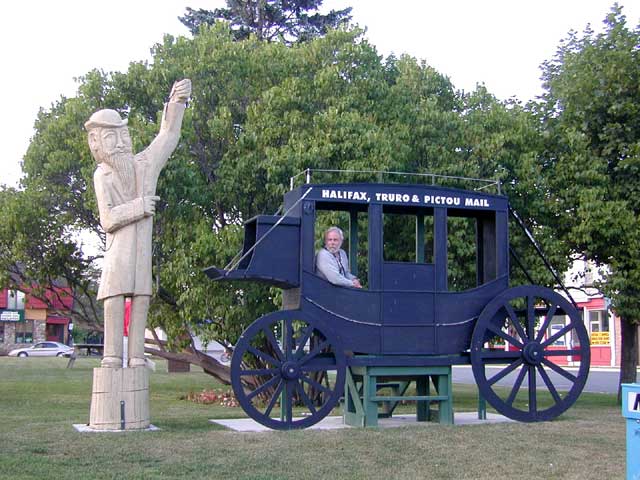
TRURO
The town of Truro has a unique decoration. They have lost many of their elm trees
to Dutch Elm disease. Many of those trees that have been lost are now decorating
the streets of the town. They have been sculpted into statues of people that were
important to the history of Truro.
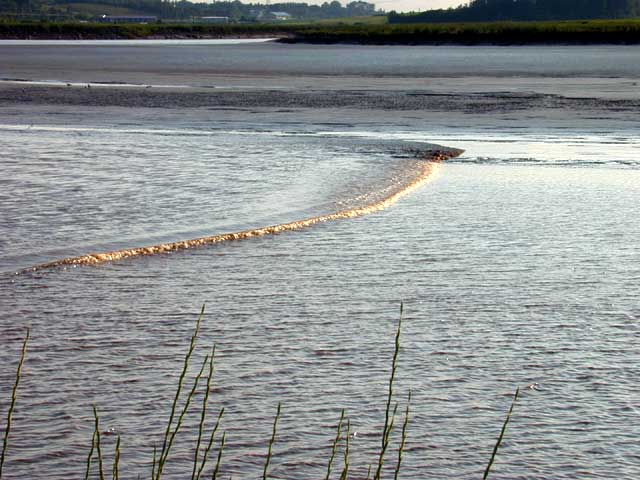
TIDAL BORE
Truro is also famous for its tidal bore. When the incoming tide pushes its way
up the river it is preceded by a wave created by the opposing flow of the river.
This wave can be up to three or four feet high depending on the height of the tide.
Unfortunately it was only about eight inches when we were there. But, even at that,
it was impressive to see a single wave moving up the river at a speed faster than
you could keep up with.
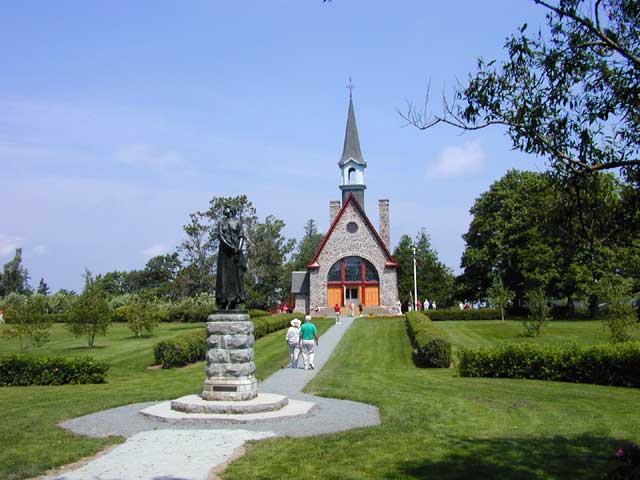
GRAND-PRE
This was the site of an Acadian settlement. In 1755 the community was exiled by the
the British. The Acadians were originally French and were good friends of the local
indians. The British were afraid that they would side with the French and the indians
in the conflict that was going on at the time, even though the Acadians had signed
a pact of neutrality. So, in 1755, the British called a meeting in the church and
trapped all the men and boys. They then brought in ships and shipped them all to
various destinations, All of the males were exiled and most of the females and there was
no attempt to keep families together. Some of the people landed in Louisiana
to become what are now called the Cajuns. This is not the original church, but one that
has been recreated.
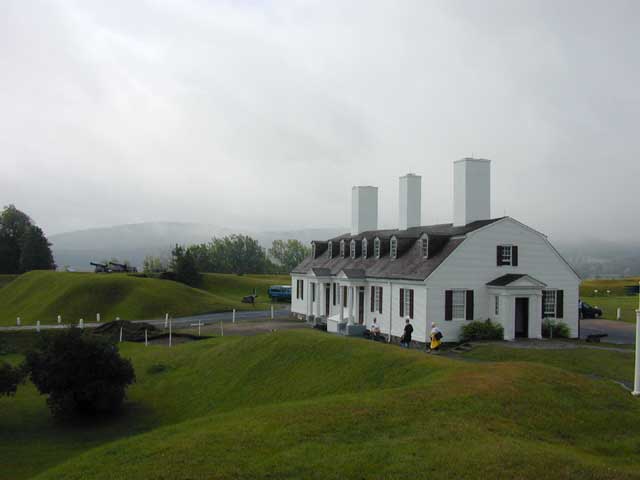
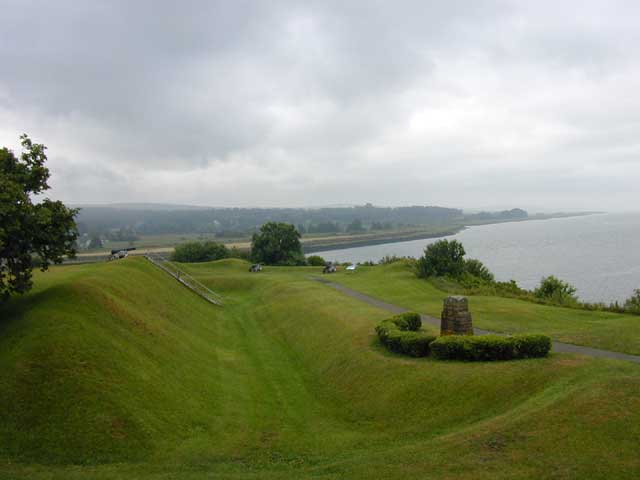
FORT ANNE
This is a very old fort that guarded Annapolis Royal. Its earthworks date back to
1702. Both the French and the British had their colonial capitals here. There is
not much remaining except the officers quarters that have been restored, and
a powder magazine. The bastions and ravelins of the earthworks are still in good
condition with some canon mounted as examples of how the fort would have been. It
has an excellent display of the history of the area in the officers' quarters.
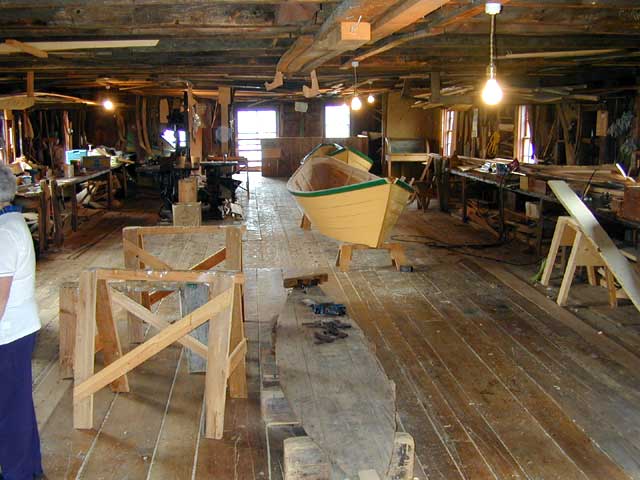
SHELBURNE
Shelburne was one of the largest ship building locations in Nova Scotia. The ships
that were built here were made of wood and the industry did not keep pace with the
changing times when the iron ships came into fancy. The one boat that continued to
be in high demand was the Shelburne Dory. These boats played a major role in the
fishing industry and were built in quantity until the 1950s. They are still built
on special order in the original shop shown in the picture. Today, one of these
will cost you more than $3000.
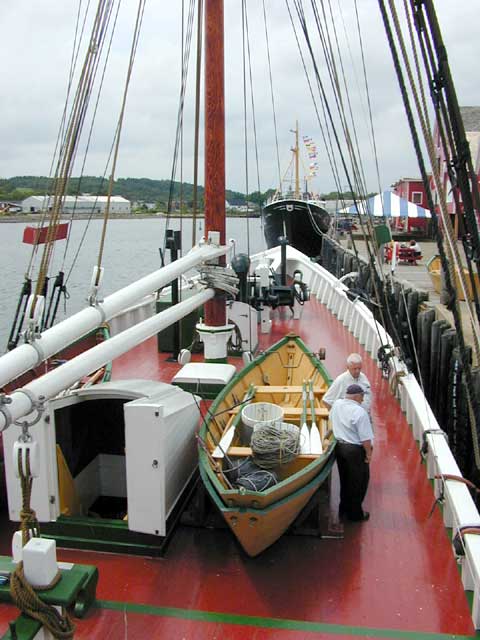
LUNENBURG
Settled in 1753 it quickly became a major fishing and shipbuilding center. Its
fishing schooners sailed the Grand Banks in search of cod. It is the location of
the Fisheries Museum of the Atlantic, an excellent presentation of commercial
fishing in the Canadian Atlantic. Well worth seeing. A restored fishing schooner
is dockside along with a steel hulled trawler, both of which are open to the public.
HALIFAX (Again)
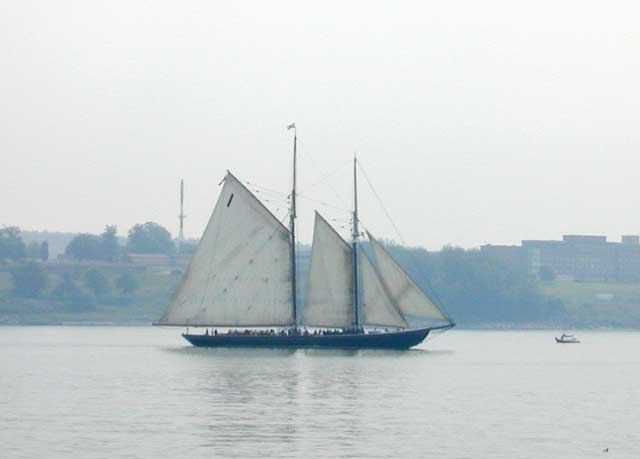
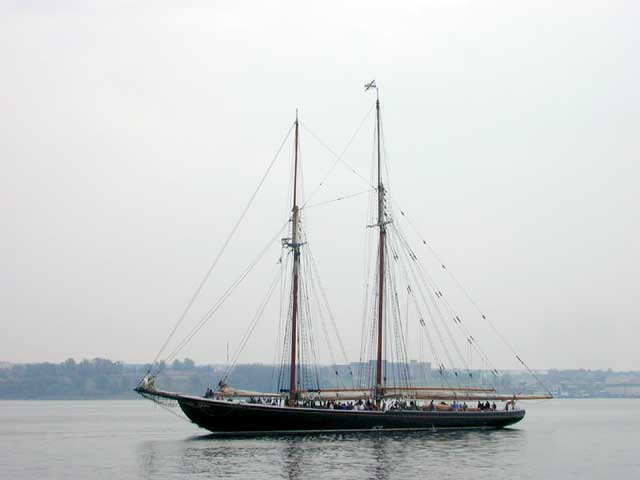
BLUENOSE II
The Bluenose was the most famous of the fishing schooners, primarily because of
her speed. She never lost the annual race between the fishing schooners and is
honored by her place on the Canadian dime. She sank after going aground on a reef.
She has been reproduced in the Bluenose II and is sailing again. She was in Halifax
when we were, and we got a chance to see her. Unfortunately we were not able to sail
on her because of time constraints. This is what she looks like.
TITANIC CEMETERY
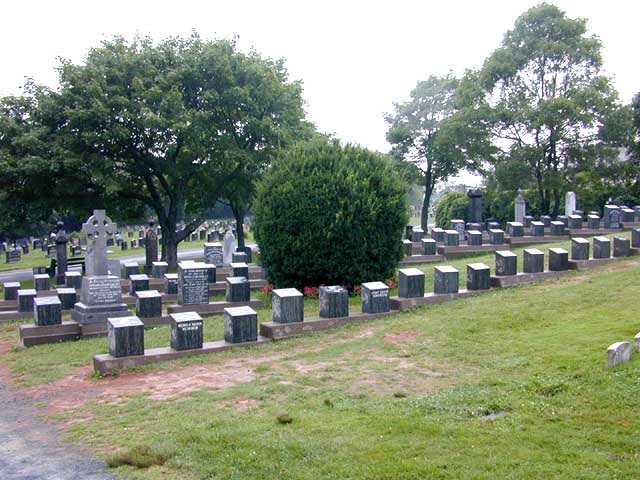

When the Titanic went down in 1912, several ships from Halifax were dispatched
to search for bodies. A few of these were buried at sea but most were returned to
Halifax where they were processed. Those that were not claimed were buried in a
special section of a Halifax cemetery. Many were not identified and their markers
had only a number. Others were buried there because their relatives wanted it, and
had special inscription on their markers, and some even had special markers. The
marker shown on the right below has the inscription "EACH MAN STOOD AT HIS POST
AS ALL THE WEAKER ONES WENT BY, AND SHOWED ONCE MORE TO ALL THE WORLD HOW
ENGLISHMEN SHOULD DIE". He was of "THE HEROIC CREW, S.S. TITANIC, DIED ON DUTY".
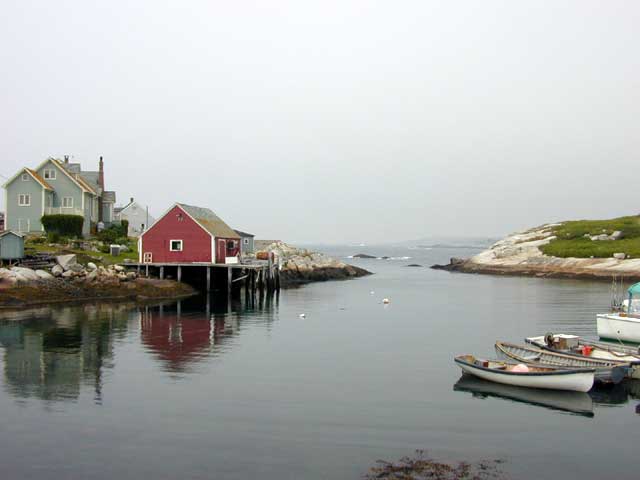
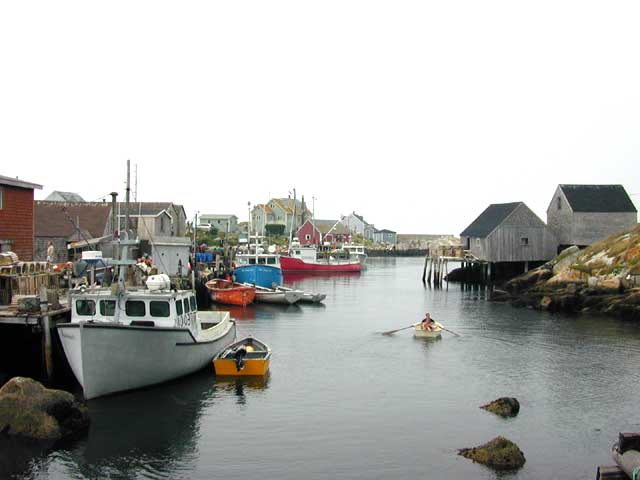
PEGGY'S COVE
This is a very picturesque little fishing village south of Halifax. When you look
in the direction that I took the pictures it looks very quiet and peaceful, but
in the other direction you see all the tourists that come here to the tune of
700,000 per year. Even at that, it is a nice place to visit.
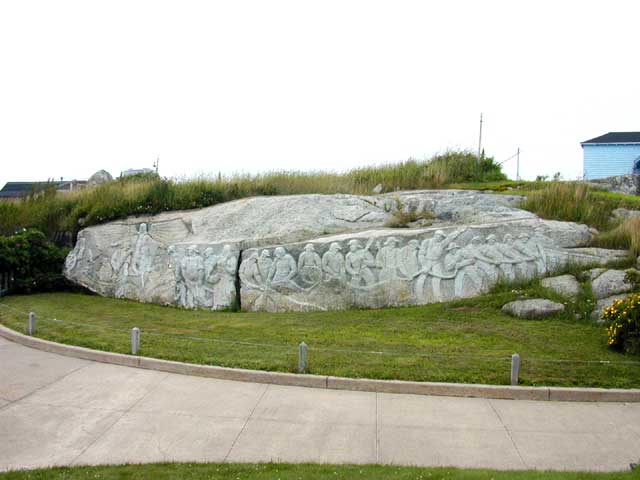
Fishermen in the Rocks
A local artist / fisherman did these stone carvings. One morning he told his wife
that he saw people in the big rock behind his house and that he was going to show
them to everyone. That is what he did and created this monument. Peggy is holding
a basket that contains her blouse.














